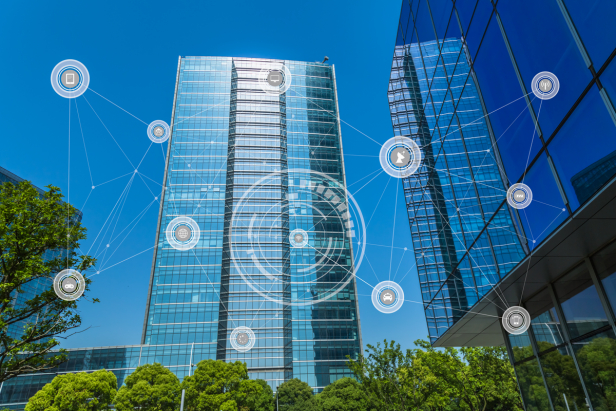Data centers are in high demand by many industries, including agriculture, banking, inventory, defense, mining, and healthcare. According to a recent report by Newmark, data center demand will double by 2030. Given the excess office stock in the US, adapting an office building (or another underutilized building) can be a win-win solution. However, the data center conversion process can be challenging due to the complex infrastructure requirements of data centers. Below is a brief overview of these requirements and how to evaluate a building's potential for data center use.
Understanding Data Center Leasing: Capacity & Redundancy
Unlike most asset classes, in which tenants lease square footage, data center leases are structured according to power usage along with space rented and related services, like security. Because disruption of service can be catastrophic for data centers and the end-users relying on them, redundancy in power and cooling pathways are critically important. The more sensitive the data, the more redundancy required. Data center tenants pay higher rates for increased redundancy. Lease terms include a Service Level Agreement, or SLA, which specify the uptime, security, and maintenance standards that the data center must meet. The SLA also specifies who is responsible for various costs related to maintaining the standards and who is liable for losses related to disruption. Over 90% of all companies that have lost their data center for 10 days or more file for bankruptcy within one year.
Considerations for Office-to-Data-Center Conversion
A building will be suitable for data center use if it has the capacity to deliver required power and cooling along with the structure and resiliency necessary to ensure adequate space and protection of equipment. These characteristics can be assessed through a well-scoped Property Condition Assessment (PCA) and feasibility study.
Recommended For You
Because electrical supply and cooling systems are critical for data centers, a Mechanical-Electrical-Plumbing (MEP) assessment is fundamental. An MEP specialist can confirm electrical capacity for the proposed project, create an inventory of current equipment, assess the condition of each asset and provide a capital budget for deferred maintenance as well as a replacement schedule for these assets. Sometimes, power requirements will indicate the need for relocating or adding a substation to support the project. Electrical systems in data centers must include an uninterruptible power supply (UPS) to provide continuous power nearly instantaneously, in case of power failure. The MEP specialist will assess the UPS and include a replacement cost and schedule according to its condition and useful life. The MEP specialist can also evaluate existing cooling systems, not only for functionality and adequacy but for efficiency. Sometimes, half of the total energy consumption of a data center is used by cooling systems. The MEP specialist can recommend additions or replacements that can boost efficiency and improve NOI. They should also identify the location of existing water lines to avoid critical equipment being located underneath these lines or to develop some sort of secondary containment in case of a leak.
The condition of the roof and building envelope is also of critical importance. As with any building, water intrusion can undermine the integrity of the building envelope and structure. In data centers, however, water intrusion can also damage sensitive equipment, cause short circuits, even start fires—all serious threats to operational continuity. A building envelope specialist should be engaged to evaluate these systems.
In terms of the building structure and space allocation, consider where equipment will be located. Where will the computer room be located? Where will the battery room(s) be located? Is the floor-to-floor height sufficient? Is the structural load capacity of the floors and/or roof sufficient? These are just some of the questions to take into consideration.
Finally, consider climate and seismic resilience. A Property Resilience Assessment (PRA), performed in conjunction with the PCA, can provide insights about the building's vulnerabilities to severe weather events and natural disasters by incorporating regional climate data with an evaluation of site-specific characteristics. It will also include recommendations for improving the building resiliency.
Moving Forward with Conversion
If you believe your building is a candidate for conversion to data center use, enlist the help of a qualified engineering consultant with expertise in MEP, FLS, building envelope, and building resiliency along with specific experience with data centers. They can assess the existing state of your building and help you identify necessary improvements. Well-scoped, high-quality assessments can provide you with the data needed to make an informed decision about your asset and business objectives.
© 2025 ALM Global, LLC, All Rights Reserved. Request academic re-use from www.copyright.com. All other uses, submit a request to [email protected]. For more information visit Asset & Logo Licensing.







